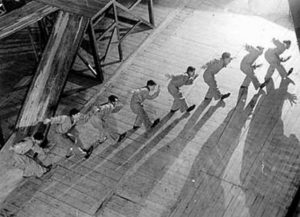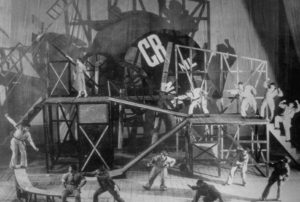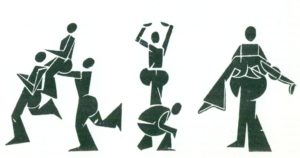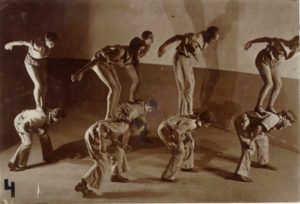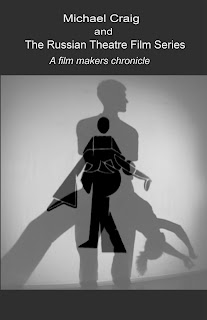The garden is sometimes thought of as an image of paradise, an image of nature in its most pure and innocent state endowed with human meaning by human artifice, a symbol of innocence and harmony best summed up in the image of the Garden of Eden, the earthly paradise before the fall. The image and the mythology of the Garden of Eden and its two original inhabitants Adam and Eve holds the potential for a return to this state sometime in the future.
The name derives from the Akkadian edinnu taken from a Sumerian word edin meaning ‘plain’ or ‘steppe’, closely related to an Aramaic word meaning ‘fruitful, well-watered’
The garden itself could be understood as a symbol of harmony and repose. A landscape which delights with its beauty and feeds us with its fruits, representing a microcosm of the earth itself. Such an image has been celebrated in art throughout the centuries in both its pristine form before the fall and the subsequent expulsion of Adam and Eve, from artists like Bruegel to Bosch and Thomas Cole.

Other cultures like the Japanese have created gardens as mythological metaphors of a state of Nirvana, such as the gardens of the Heian period which embodied the paradise of Pure Land Buddhism, an earthly realm to the west which could be reached by souls through meditation and good works. The gardens they built came to personify the state which could be attained in order to achieve rebirth into a higher state of being.
The world of Art movement in the early twentieth century employed the motif of the Garden Paradise to express the concerns and anxieties they felt about sweeping changes taking place in Russian society at this time.
The World of Art Movement (Mir Iskusstvi) was a group of Russian symbolist artists who sought to establish high standards of aesthetic excellence. Its members like Benois Baskt, Somov and Dobuzhinsky, were unhappy with the anti-aesthetic nature of modern industrial society and sought to consolidate all Neo-Romantic Russian artists under the banner of fighting Positivism in art.
Like the Romantics before them, the miriskusniki promoted understanding and conservation of the art of previous epochs, particularly traditional folk art and the 18th-century rococo. However, this was only on the surface. Their work took on an ironic turn in its attitude to nature and history which could no longer be depicted or understood artistically as a facsimile or copy of reality. Many of their works depicted nature in its man-made and modified state – nature as a modified artifice. They took the classical motifs and subjects of gardens estates and parks and applied to them their own contemporary questions and concerns. Dobuzhinsky, Baskt. Somov and Benois took part in the group’s activities which became part of what is known as the Silver Age of Russian art in the early 20th century. The Garden Estate or park became a constant subject of artists of this period but with a crucial innovation. Something in the garden was not right. Paradise was undergoing a transformation, it was falling into a state of decay and the art of this group reflected the general feeling of unease, a creeping sense of impending disaster or doom which accompanied the end of the 19th century and the beginning of the 20th century in Russian society. This feeling was accelerated with the revolution of 1905, a kind of dress rehearsal for what would come later.
There were no thunder clouds gathering on the horizon in their work but there in the garden could be detected an unease an sense of deterioration in the fabric of the park, something hidden behind the facade of harmony, difficult to express but palpable – a specific aroma associated with a dying epoch and themes of the past. These artists had no real love for ancient Russia and they chose historical themes and images of Western Europe; from the Versailles of Louis 14th, images from Hoffman, Goethe and the commedia dell’arte as well as a scattering of Russian life from the age of Peter the Great, the 18th century, Pushkin and the Petersburg of Catherine the Great, Alexander and old Russian Estates. However, the work was by no means historical or wedded to accurately or realistically portraying the past and its idealised beauty.
The prototypes for this process comes from such academic and classical painters as Antoine Watteau, The Embarkation to the island of Cythera, Cythera being the birthplace of Venus and Daniel Chodowiecki’s ‘The Merry Party’ in the 18th Century Rococo, a style almost excessively emphasising decorativism. They are idealised landscapes in some way but contain the seeds of the future world of the group’s preoccupations and aesthetic.

Benois in his paintings of Versailles eschews heroes and personages, his real heroes are works of art; statues, fountains and the huge massive stones of the palaces which tower theatrically over the people in the painting. The atmosphere is gloomy, and muted, grotesque in an Hoffmannesque fashion. The statues have more significance than the hunched figures in the paintings and in liberating his landscapes from historical associations they are often theatricalised.
There was a trend to theatricalise nature in his paintings. Usually there is a tendency for theatre to draw from nature but in these paintings nature is mimicking theatre in a peculiar reverse aesthetic, setting up a dualism in our minds eye which has the effect of ‘deposing’ reality, pulling it out of joint.
This trend was most obvious in the paintings of Konstantin Somov, whereby the garden paradise is completely subverted. The statues are almost waiting to come to life gazing down at the characters in the painting, commenting on them as it were. The commedia dell’arte figures we see are real people almost photographic in their realistic portrayal. But everyone is in costume from some other century.

Courtesans, Somov 1903
It is difficult to know if this is a masquerade in the present or a masquerade from some other time or century or epoch. Once again, this blurring of fantasy and real life creates a dualistic tension which unnerves the viewer even if only subconsciously. Occasionally a contemporary figure will appear as in the painting of Harlequin and Death, when a couple in modern evening dress embrace and kiss on the lawn in the middle distance but they are framed by a gigantic Harlequin and a Death in the form of a skeleton which is definitely a skeleton and not a character in masquerade. Draped in a sable cape decorated with drops of molten silver it is a parody of an ermine cloak, normally associated with royalty and kings and queens. The cape, a kind of dark photographic negative of white ermine with black flecks, is a parody of the regalia of a king or queen but dressed in an infernal motley. The molten silver drops are like the fallen stars of the apocalypse which would befit death.
In other paintings the unease is underlined by the background figures which seem to be up to something, but we don’t exactly know what. We become interested in their conversations or activities. Strangely it is the background which often draws our attention in all its alien vagueness. We want to know what is going on in the dim recesses of the painting once we have dealt with the glaring theatrical figures which have been thrust in the foreground. They want to command us to see them but eventually we want to look elsewhere. The play on perspective again draws our own perception sideways, pulling us up short as to what is going on. Apparently Somov, according to his sister’s diaries, had a vision defect which effected how he saw perspective and this no doubt contributed to the kind of feeling and emotion in his paintings. There is a sense of extreme vitality and life, combined with a deathlike fixed theatrical dream, a theatre set where puppets are in the foreground and real people are milling about in the background and yet the puppets are imbued with an excess of energy which appears unnaturally frivolous.
Somov parodies the grand classical themes of art; great stately gardens, idealised nature and beauty but degraded and purposely grotesquely trivialised. The garden, the classical paradise is presented as a place where frivolity and death live side by side, each mocking the other, intensifying the feeling of a world separated from reality, of things taken out of context and deliberately ironic and self-mocking. This feeling is underlined in one of Somov’s drawings for a book by Sergei Sudeikin. The scene is a Chinese garden. In the centre of the drawing a gigantic skeleton stalks through the scene. On the left Harlequin and Columbina are moving out of the drawing, a sad spectacle, with Columbina leaning on Harlequin’s back perhaps sobbing. They are being escorted by a grotesque figure who may even be pushing them forward. On the left a female figure is flying into the scene. The whole drawing is reminiscent in its various components of classical paintings of the Garden of Eden with Gabriel escorting them from paradise at the point of a sword. Again, there is an echo of the apocalypse with death taking centre stage in this carnival version of the fall.
Many of Somov’s paintings might remind us of modern-day graphic novels in their tasteless but excellent degree of technical and artistic skill. The question arises why – why is it garish and ‘tasteless’. Perhaps while nature is being continually rationalised, Somov’s masked figures seem to want to reassert a modicum of chaos through humour and the grotesque. They take us somewhere else and even put in doubt the very idea of a garden paradise ever having existed at all. The comic cardboard style subverts our normal associations with classical motifs making us think and approach the themes of the picture from a different angle. It is almost as if the mocking and light-hearted exposition of the subject and joking parody is done on purpose, easing the horror and pain without directly confronting it, offsetting the fear with laughter and foolishness the closer the approaching catastrophe comes. The mixing of laughter and tragedy is something peculiar to theatre. The carnival mood is like that of Edgar Allan Poe’s short story The ‘Cask of Amontillado’ which takes place during a carnival and the victim is dressed in carnival motley. As he is walled up alive, drunk on the sherry, we can hear the bells on his costume tinkling merrily. Even by distancing us with the mixture of merrymaking and death our attention is drawn more acutely by the underlying contradictions of emotion, to the coldness of the killer’s revenge. The same is true with Poe’s Mask of the Red Death where ‘Death’ appears among the carnival guests who are attempting to avoid the red death plague outside the walls of the abbey by barricading themselves inside and indulging in a feast of merriment and carnival masquerade. The red death appears inside the abbey almost as part of the masquerade itself.
It is interesting to note that Dostoevsky was an admirer of Poe’s work. Dostoevsky had the prophetic vision to see the infernal texture of the future epoch. ‘The Devils’ and its preoccupation with the depth of evil and cold savagery to which human beings can descend is a prolegomena to the 20th Century. Dostoevsky’s imagery was not lost on artist like Somov and Blok.

Even Chekhov, although not a member of the mir iskusstva,in his own restrained way was expressing the destruction of a whole civilisation in ‘The Cherry Orchard’ where the sale of the cherry orchard impacts on the main characters with far reaching consequences. The garden paradise of provincial Russia, in the image of the cherry orchard, would succumb to its own mini apocalypse and was merely in the end something to be bought and sold.
Many of Chekhov’s works are centred around what is understood as the dacha which looms large in every Russian’s psyche. Chekhov used the idea of a peaceful country setting a natural and harmonious playground for his characters on the surface but turns this idea inside out.
At this time of the year everything seems to stop; work school and even the theatres close for the season. Moscow empties out and there is a mass exodus to the countryside. The dacha is an enclosed world where the outside world can be shut out much like Poe’s abbey and it seems the cares and woes of city life can be put to one side. However, with Chekhov here in the dacha the inner drama of people’s lives, seemingly buried deep in the human consciousness, rises to the surface in restrained but epic proportions. Forgotten traumas force themselves to the surface. Characters undergo a poignant disenchantment bordering at times on indifference, which then erupts into an agonising sense of loss and purposeless as the characters search for meaning to their existence. Strangely the drama of Chekhov reminds us of another Russian artist, Tarkovsky, despite his distance in time from the Silver age. The Russian countryside and natural environment plays an enormous part in Tarkovsky‘s films. The opening part of Solaris comes to mind and also, Stalker.
In Stalker the main characters travel from the gruelling oppressive city to the countryside just like Chekhov’s characters. Here, Chekhov’s gloomy indifferent countryside has turned into a dystopian radioactive nightmare known as the ‘zone’ where the normal laws of existence are no longer applicable and as with Chekhov there is no immediate relief. Relief can only be bought at a price, confronting through suffering ones inner and moral failures and deficiencies. The landscape looks the same as it does in Chekhov’s world but now is littered with the debris of an apocalyptic event.

But to return to the Mir Iskusstva. In the early twentieth century the quickening pace of industrialisation became a feature of Dobuzhinsky’s paintings, and he stands out as one of the true innovators of this trend. As well as the classical Petersburg he saw a new industrial era emerging all around him and it affected his work as the old traditional Russia seemed to be displaced by new architecture and the infrastructure of an industrialised city. The painting ‘The Courtesans’ is an early snapshot of Petersburg nightlife in this era. The female figures are muted, faded and lifeless. Not exactly victims but certainly ghostly casualties illuminated by the garish electric lights in the background which give off a ghoulish green tint.
Later, his painting ‘A Man in Spectacles’ shows a typical member of the intelligentsia, a figure almost identical to Chekhov, standing in his room facing us. Behind him out of the window can be a seen a large, what appears to be, market garden. It is tired and maybe unattended and in the far distance a dreary urban space is slowly intruding on the garden, displacing it. The man in spectacles is less like a human being and more like a dehumanised spectre, an emotion with which no doubt many of the Russian intelligentsia of the time could identify, as their world view began to collapse.
Dobuzhinsky goes further in his painting ‘The Kiss’ which shows a naked couple embracing. Behind them a modern futuristic city is collapsing in flames in a fiery apocalyptic vision
It reminds us of the famous sculpture by Rodin ‘The Kiss’. The embracing naked couple depicted in Rodin’s sculpture was originally part of a group of reliefs which decorated Rodin’s monumental bronze portal The Gates of Hell, commissioned for a planned museum of art in Paris reminiscent in style of The Last Judgement of Michelangelo in its intent. The Kiss, was originally titled Francesca da Rimini, depicting the 13th-century Italian noblewoman featured in Dante’s Inferno(Circle 2, Canto 5) who falls in love with her husband Giovanni Malatesta’s younger brother Paolo.
At the gate:
Through me the way into the suffering city,
Through me the way to the eternal pain,
Through me the way that runs among the lost.
Justice urged on my high artificer;
My Maker was Divine authority,
The highest Wisdom, and the primal Love.
Before me nothing but eternal things
Were made, and I endure eternally.
Abandon all hope, ye who enter here.
Dante, Inferno, 3.1–9
The garden of paradise is long gone and could never survive such a conflagration in any case. The couple in Dobuzhinsky’s painting remind us that as one civilisation falls the seeds of another are present. Dobuzhinsky, Somov and Benois as part of an educated elite would have been fully conversant with these texts and references to Dante and other writers and artists. There is no reason not to suppose that they became major influences in their work. It is more than likely that they even cued their audiences to spot the allusions and devices embedded in their work and not necessarily with any subtlety.
Dobushkinsky painted set designs for the prologue of Remizov’s The Devils Play(or The Devil’s Comedy) Remizov was heavily influenced by Dostoevsky. In Dobuzhinsky’s set design there is a close connection to Benois’s design for the ballet Petrushka as Janet Kennedy points out in one of her essays.
Dobuzhinsky’s set design is a sheet of darkness illuminated by a few stars similar to the backdrop of Benois design for Petrushka’s room. The devils guarding the door of Petrushka’s room are stylised in the same semi frightening and semi comical style as the devils which populate the underworld in Dobuzhinsky’s set. The thing that definitely links them however is the presence of a comet in some of Benois’s later designs. The comet is a sure sign of the apocalypse although it is likely that Benois used it in Petrushka more for decorative effect than anything else. It is also no coincidence that the Moor’s room is an exotic tropical jungle paradise. The two realms, the apocalyptic and ‘paradise’, sit side by side within the ballet Petrushka.

Vasily Rosanov wrote his book The Apocalypse of our Time directly referencing in the title Lermontov’s A Hero of Our Time. Rosanov was writing after the revolution and found himself at what he thought was now at the very epicentre of an apocalypse. The garden paradise was a long way away and rightly or wrongly he drew for himself the necessary conclusions about the fate of Russia in this book.
With Lermontov in mind we know that Russian culture has a powerful prophetic strand both in its art and literature and the apocalypse was the perfect vehicle to express the forebodings and fears which confronted Russian society before the revolution as well as the anxiety felt about a coming catastrophe. In 1830 Lermontov wrote the well known poem ‘Prediction’ when he was only 16 years old presenting himself as the poet prophet as first marked out by Pushkin.
A year will come for Russia, a dark year
Where royalty no more their crown will wear
The mob who loved them once will love forget
For Blood and death will richest feast be set;
The fallen law no more will shield the weak
And maid and guiltless child in vain will seek
For justice. Plague will ride…….
It is fitting to end with Lermontov as a kind of coda to the idea of a tainted paradise. Lermontov, who was no stranger to demons, masquerades and dark carnivals, goes on to describe an apocalyptic vision of famine, war and strife in the true decrowning style of which Bakhtin often writes and is the centre of his commentaries on art and literature.
This article was originally published in Russia Knowledge under the title “The Garden Paradise“








